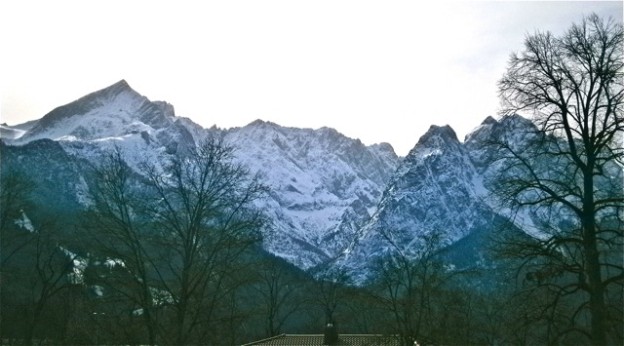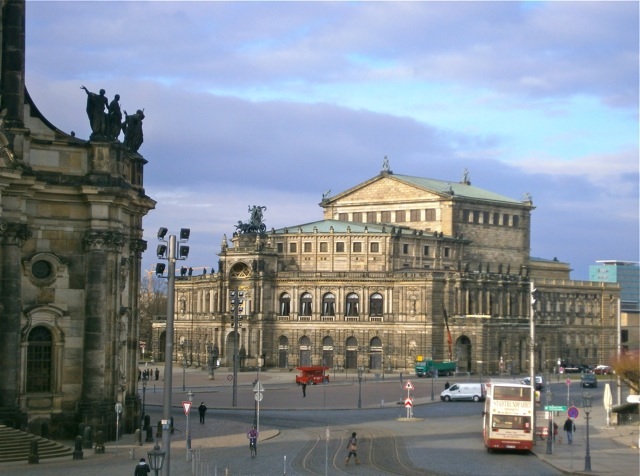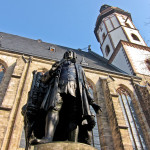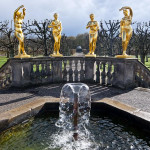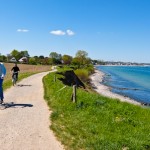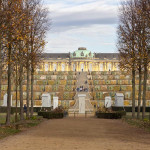This is the view from composer Richard Strauss’s house in Garmisch-Partenkirchen. Is it any wonder that he wrote the “Alpine Symphony”?
Strauss was born 150 years ago in Munich, on June 11 1864. Many people get their Strausses mixed up. Richard Strauss is nothing to do with the waltz family of Vienna. He is not related in any way although both Johann, the waltz king, and Richard were linked by Stanley Kubrick on his soundtrack for “2001 A Space Odyssey.” The “Dawn” sequence of Richard Strauss’s “Also Sprach Zarastrutha” is responsible for the thunderous opening sequence. Johann Strauss’s “Blue Danube” waltz featured in the moon landing. Oh, and “Also Sprach Zarastrutha” was the music that heralded Elvis’s entry onstage in his later career.
In this, his 150th birthday year, Richard Strauss will be celebrated in the various cities where he built his career. Fortunately for a music-loving traveller, Strauss worked in two of the most fascinating cities of his homeland – Dresden and Berlin.. And the great man had the good grace to decide to settle and work amidst the snowy peaks that surround Garmisch-Partenkirchen. Here is a brief round-up of Strauss-related 150th events in Germany:
Dresden
Dresden nurtured the composer Strauss by premiering nine of his operas including the scandalous “Salome.” Even today this tale of lust, erotic dance and decapitation can shock. Imagine the reactions of the corsetted and bustled opera-goers of 1905! Dresden leads the Strauss celebrations this year with some very glamorous “Richard-Strauss-Days” in November. World-class performers, Renee Fleming and Thomas Hampson, will appear at Dresden’s opulent Semperoper in works including “Arabella” and “Der Rosenkavalier.” Conductor Christian Thielemann will lead an all-Strauss birthday tribute concert on 11 June.
The Semperoper is just one of Dresden’s beautiful buildings that has emerged, phoenix-like, from the flames of the allied fire-bombing. This makes for a beautiful, if baffling city. I spent most of my recent visit asking “old or new?” “New” was the usual response. “New” is the very proud response to a visitor’s first sight of old Dresden’s jewel, the Frauenkirche.
The church has risen again from utter devastation and stands at the heart of the resurrected city, a small, beautifully located area on the banks of the Elbe. A brief walk from the Frauenkirche Platz to the Semperoper takes the visitor through the baroque heart of the city (“old or new?”) past a surprising “survivor”- from the 1870s but replacing an earlier decaying version: the wall of Saxon Kings – a wall of gold and black Meissen tiles depicting the rulers of Saxony. Right next door to the opera house is the elegant Taschenbergpalais Kempinski hotel where one of Strauss’s batons is on display in the music room. If you visit in winter, this is the site of Dresden’s most romantic skating rink. That would be a good time to try the dark, rich hot chocolate at Camondas 20 Frauenkirche Strasse.
Garmisch-Partenkirchen
Strauss claimed that the royalties from “Salome” paid for the villa in Garmisch where he settled in 1906 and lived until his death in 1949. The villa still stands and looks from the outside just as it did in Strauss’s time. It is not open to the public – his descendants still live here- but it’s worth the short, lovely walk through streets of Alpine houses in the heart of Garmish over the river to the rural setting of the house at 42 Zoeppritzstrasse . Strauss composed in his study on the right hand side of the house at a desk looking out, as pictured above, onto the Zugspitze, Germany’s highest mountain.
Garmisch will be honouring its famous resident with a festival entitled “Happy Birthday Mr Strauss” starting on his birthday 11 June to 19 June and overseen by artistic director and celebrated mezzo-soprano, Brigitte Fassbender.
A short walk from the Garmisch-Partenkirchen railway station on the Partenkirchen side, is the Richard Strauss Institute. A German critic described the institute as a ‘small museum for a big genius’. There are just a couple of rooms open to the public in this big elegant house. They contain memorabilia associated with the composer – a surprisingly large formal dress suit and shoes, and photos and recordings. The institute is used by Strauss scholars. When I was there a soprano with a big, creamy voice of the Kiri te Kanawa/Renee Fleming variety so perfect for Strauss roles, was rehearsing in the next room.
Berlin
Strauss worked as a conductor throughout his life and got his first conducting job in Berlin. The Berlin Philharmonic under Lorin Maazel will mark his tenure in the city with a series of concerts from June 4-June 7 at their Philharmonie home.

